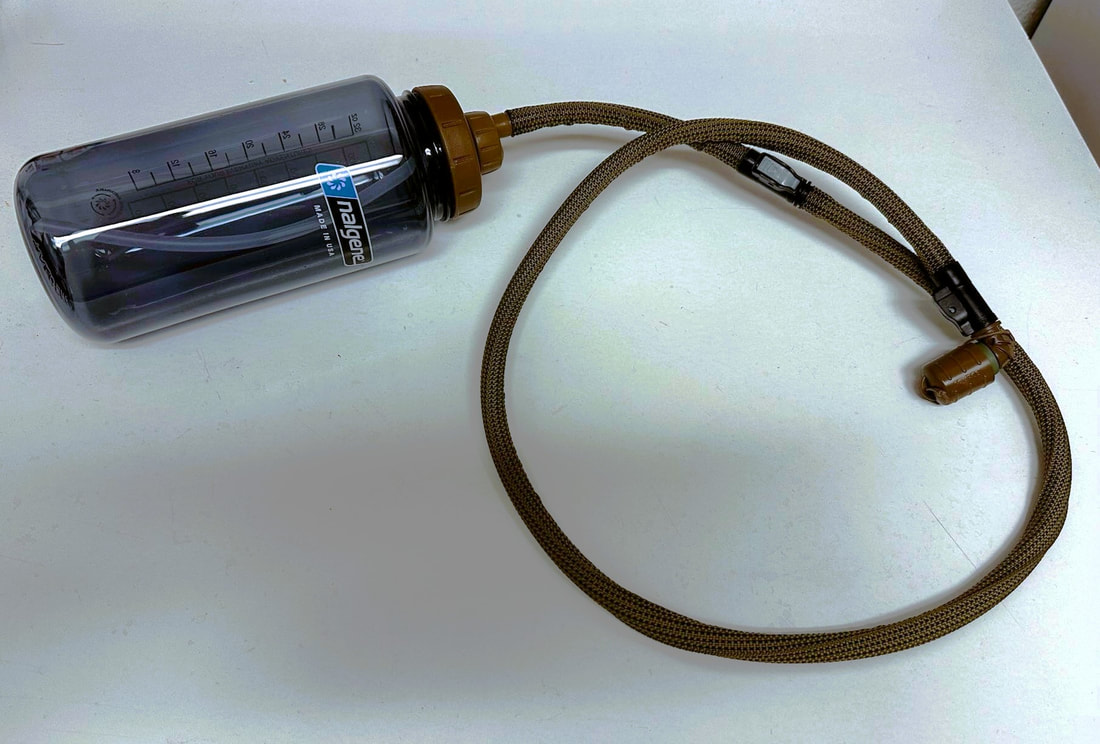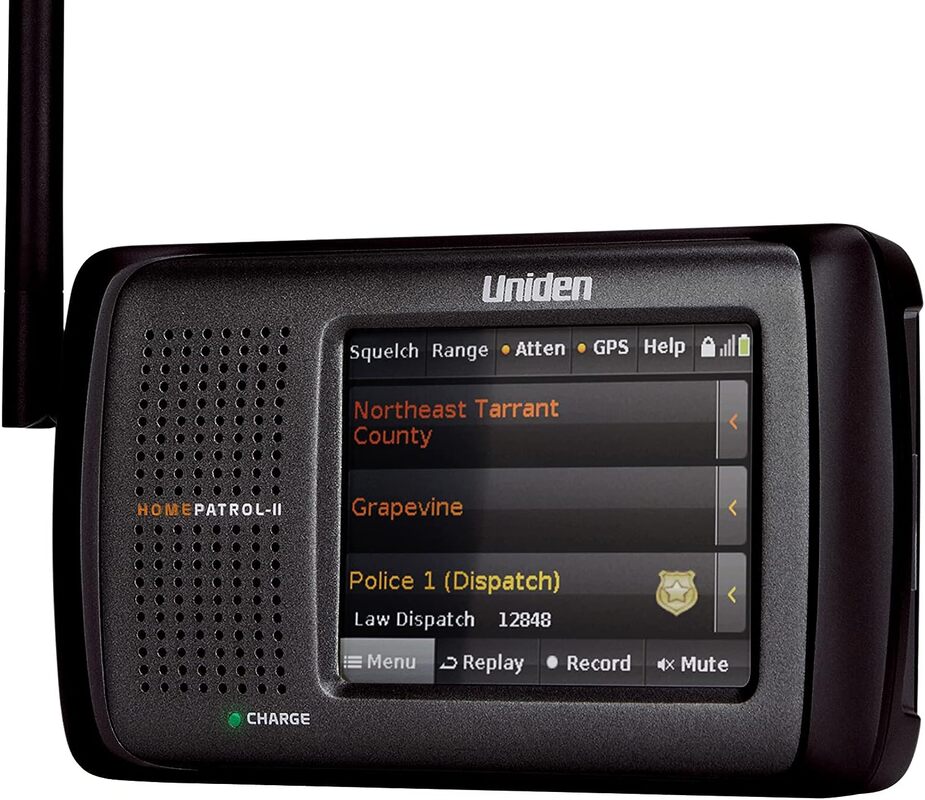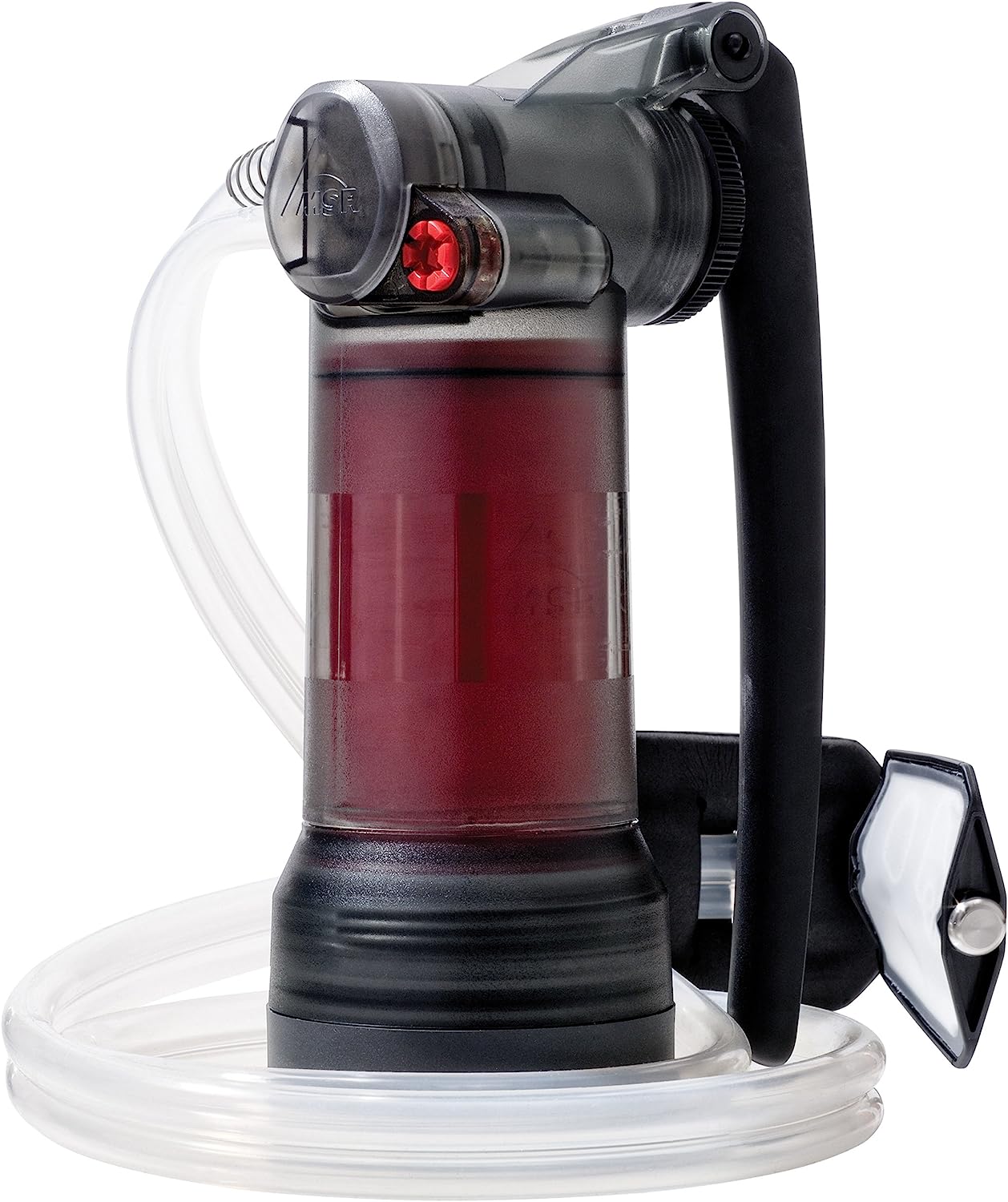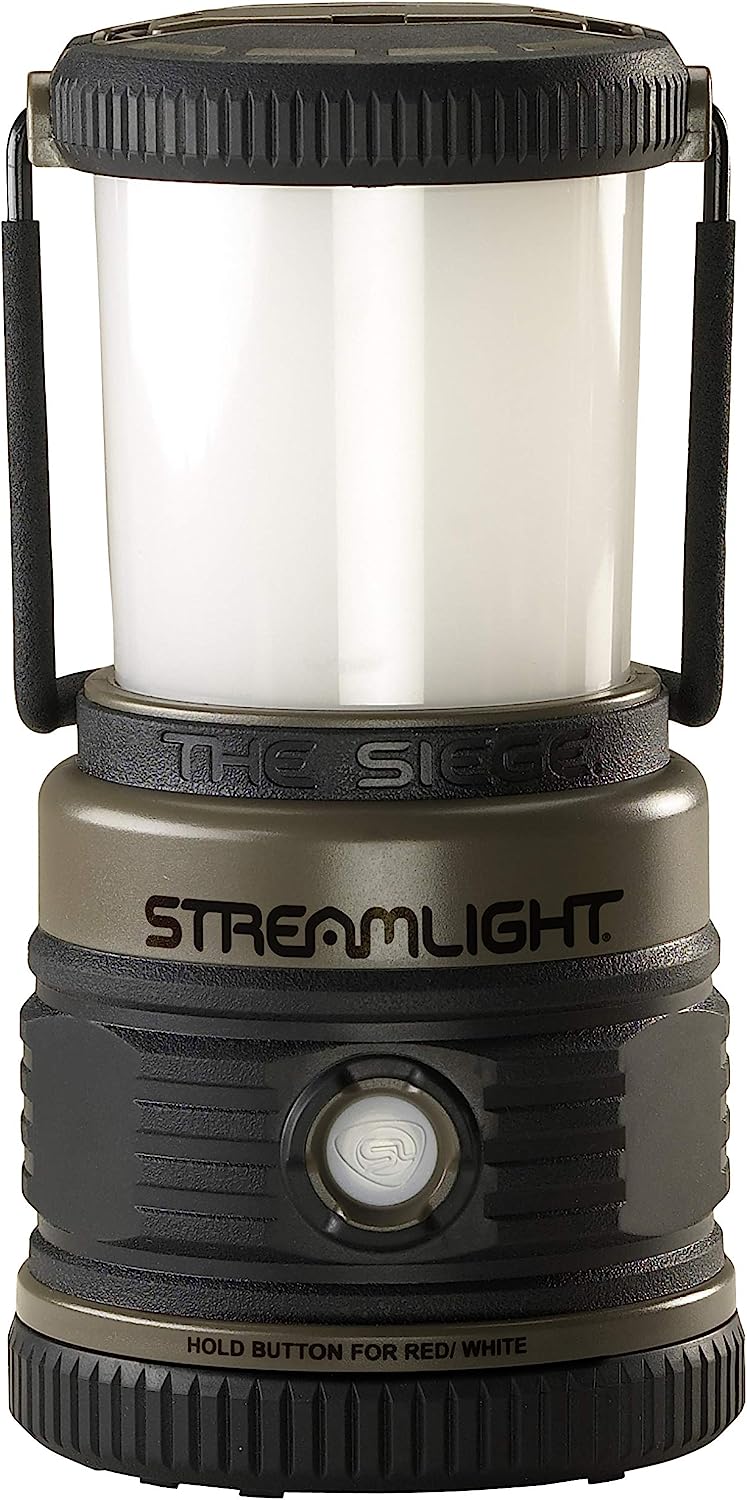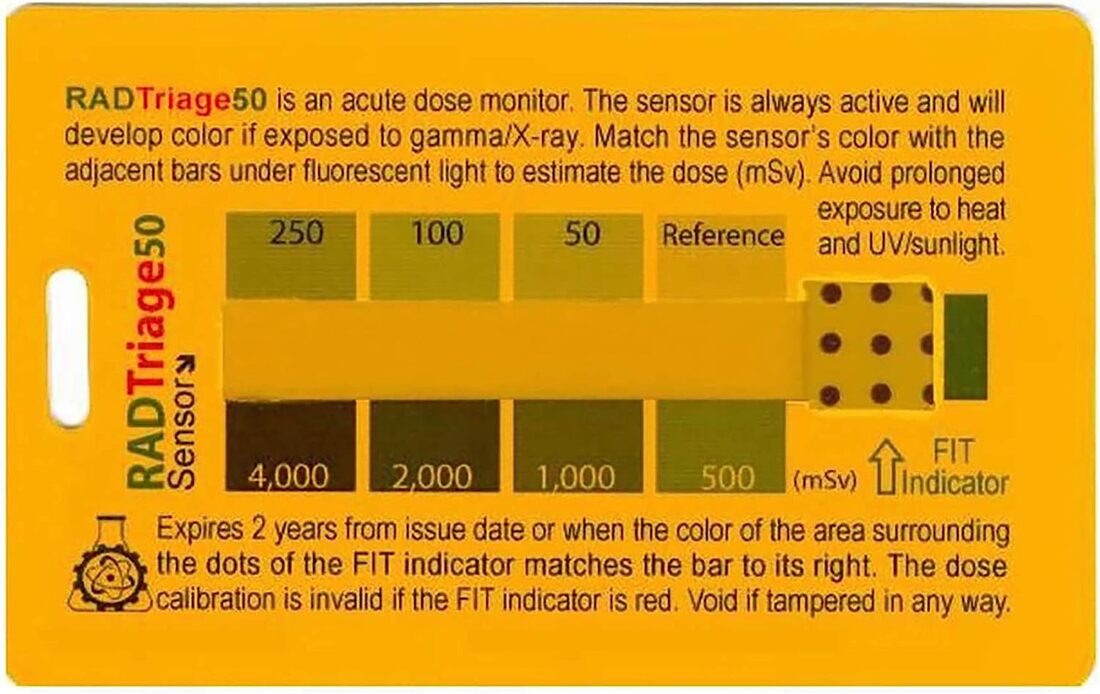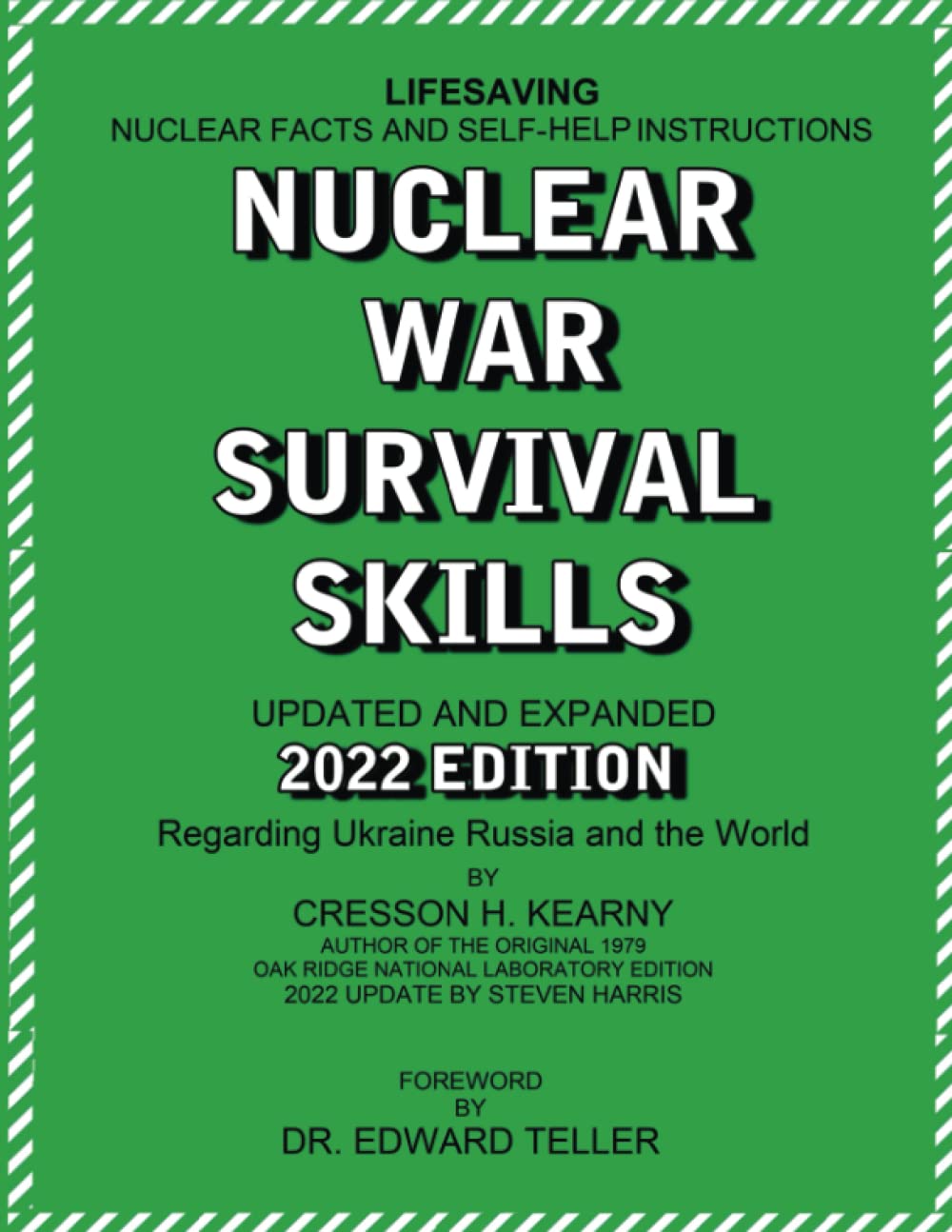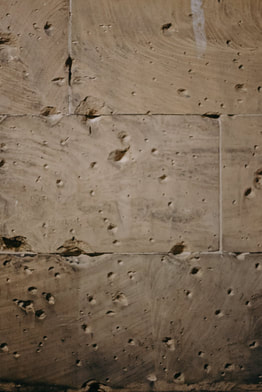 Note: this an adaptation from my non-fiction book Suburban Defense: A cop’s guide to protecting your home and neighborhood during riots, civil war, or SHTF. If it can be seen, it can be hit. If it can be hit, it can be killed. If you can be seen, you can be hit. If you can be hit, you can be killed. Concealment is something that hides you from view, thus the root word of conceal. Concealment typically does not provide protection from bullets. Cover is something that can protect you from penetrating gun fire. Concealment can deflect bullets, but it will not stop them. For instance, shooting through thick brush or foliage may cause bullets to miss, but if you are on the receiving end of fire, don’t count on it. Just because you can’t see your target doesn’t mean that your bullets won’t hit him. If you need to kill someone and they are hiding behind something, odds are you can try shooting through it. Cinder blocks appear to be solid and capable of stopping bullets, but they aren’t. One example of this is from an instructor of mine who received a shot from a suspect from behind a cinder block wall. My instructor knew where the suspect was hiding and shooting from, so my instructor fired his .357 Magnum through the wall (where the shooter’s head/chest would be). His first shots cracked the hollow blocks and the remaining four hit and killed the suspect. Your suburban home will not offer true cover. The best you can hope for in a stucco or siding and wood home is great deflection and energy depletion of bullets. That is why getting low and far away from where bullets might come from is vital. Luck plays a part here and anything in the way of a bullet before it reaches the cover you are hiding behind gives you a better chance of survival. The Marine Corps has the following to say regarding weapon penetration in urban areas. The most likely threat will be from the AR-15’s 5.56mm round. b. Weapon Penetration. The penetration that can be achieved with a 5.56-mm round depends on the range to the target and the type of material being fired against. Single 5.56-mm rounds are not effective against structural materials (as opposed to partitions) when fired at close range—the closer the range, the less the penetration. 7.62mm rounds have greater energy and greater penetration, but at short ranges tend to exhibit penetration characteristics similar to 5.56. 9mm and other pistol bullets will have even less energy to penetrate. Regardless of the caliber, it should be assumed that all bullets will penetrate anything other than substantial cover or correctly rated body armor for that caliber. Bullet penetration of suburban homes Several formal and informal studies of the bullet resistance of homes have been done. The results show that while homes aren’t truly “invisible” to bullets, their ballistic resistance is not enough to provide comfortable protection against aimed fire or “lucky” stray rounds. Gun bloggers performed tests with typical home defense weapons. This was against the individual construction elements (bricks and boards) and not an actual building or simulated wall. Tested against gypsum drywall (Sheetrock), .22 LR cartridges penetrated eight inches, while higher velocity and larger calibers, like .22 Magnum or 9mm and .45, penetrated up to 12 inches. Note that each panel is usually 5/8ths of an inch thick. Against cinder block, only bullets larger than 9mm caused structural damage. It took multiple shots to crack the block. One .357 Magnum round would “chunk” the brick and multiple rounds caused the brick to fail. Various sources have reported that anything smaller than 9mm will not seriously damage cinder block, but multiple shots from larger calibers may damage the block sufficiently to penetrate. Shotgun slugs easily penetrated drywall and destroyed cinder blocks; shot tended to ricochet off the blocks without causing damage. Buckshot penetrated 12 inches of drywall and birdshot penetrated two inches.[2] Canadian researchers fired .38 Special, 9mm, and .40 caliber rounds from handguns and found a third to two-thirds loss of velocity after bullets exited a simulated stucco exterior wall. Wood and vinyl siding covered walls caused about a 15% loss of velocity after penetration. Stucco walls were the most durable, which would slow a standard range type bullet down to about half-velocity.[3] However, bullets traveling at even 500-700 feet per second are deadly. Using the blogger’s test data above, a .38 Special round traveling at 700 feet per second penetrated six inches of drywall; more than enough velocity to go through five walls. It is beneficial that interior walls do have studs and wiring inside as well as other household decorations and furniture that could further deflect or slow the bullet. Rifle bullets, like the ubiquitous AR-15’s 5.56mm bullet, actually penetrates less building materials than handgun bullets, due to the rifle bullet’s unique characteristics; yet this is cold comfort. AR-15 bullets penetrated into ballistic gelatin (which simulates human tissue) about seven inches or a third of the distance that handgun bullets did after penetrating a typical interior wall. Pistol bullets went in about 20 inches.[4] Seven inches of penetration would easily cause serious injuries or death to someone on the other side of the wall. The Blog Box O’Truth found that 5.56 rounds “deviated so much from its course after the first wall, that it was almost impossible to hit the other walls to test penetration.” So they built bigger wall panels and standard M193 bullets went through four drywall panels. Insulation made no difference, but for 5.56 rounds, the air gap of a room may make a difference.[5] Their tests show that the bullets “keyholed” or turned sideways as they tumbled in flight end over end (after penetration), making the eponymous mark. The air gap of a room means more time to tumble and lose velocity. However, these walls were simulated interior walls spaced ten feet apart, not exterior walls. Velocity was not recorded, but death or injuries can’t be excluded from probability of a bullet that made it through.[6] A video from Paul Harrell, an ex-US Army marksman, demonstrated that .30 Carbine and 5.56mm bullets penetrated a simulated exterior walls of wood sheathing, plywood, and drywall, firing first through four panels of drywall before the exterior wall was contacted. He also noted the 5.56 rounds keyholing.[7] A Canadian study found that .223 (5.56) and .308 bullets went through one simulated typical stucco wall. The .223 bullet was believed to have fragmented through the wall while the .308 bullet retained sufficient energy to wound or kill. 12 gauge buckshot was stopped while the slugs penetrated easily. Tests against vinyl siding walls showed the bullets going through both walls, when shot at a corner. 9mm and .40 pistol bullets also penetrated the wall. Clay and concrete bricks (solid) exhibited strong bullet resistance. Large-caliber high-velocity hunting rounds (7mm-.30 caliber) created holes and cracks but did not penetrate. This is consistent with US military testing that multiple rounds centered in one place were required to penetrate solid blocks.[8] What does all this mean? The further away from where the shooter is, the better chance of survival you have. That is why I recommend that anyone taking cover inside the house do so furthest away from the street or wherever the shooter outside is. More material means more energy loss to the bullet and a greater chance for it to be deflected. A typical home has all sorts of stuff in and on the walls, plus furniture and decorations, which might make a bullet go in a harmless direction. On the other hand, random chance could send it into you. For someone at the back of the house, down low, a stray bullet is not much of a danger. Intentional, aimed fire is, however. The greatest danger is a bullet going through a window and continuing undeflected through multiple interior walls. Many people killed in drive-by shootings of homes were struck when bullets passed through windows.
[1] USMC, Military Operations on Urbanized Terrain (MOUT), MCWP 3-35.3, 1998, pp. B3-4 [2] Gun-Tests.com, “Handgun Bullets: How Do They Penetrate in Home Materials?”, originally published October 13, 2015, updated March 19, 2020, retrieved 06/15/2021. https://www.gun-tests.com/ammo/handgun-bullets-how-do-they-penetrate-in-home-materials-4/ [3] R. W. Schiefke, Canadian Police Research Centre, TR-11-09 “Penetration of Exterior House Walls by Modern Police Ammunition,” October 1997. [4] Gary K. Roberts, “The Wounding Effects of 5.56MM/.223 Law Enforcement General Purpose Shoulder Fired Carbines Compared with 12 GA. Shotguns and Pistol Caliber Weapons Using 10% Gelatin as Tissue Simulant,” Would Ballistics Review, Vol. 3 No. 4, 1998 [5] [5] The Box O’ Truth, "#14 – Rifles, Shotguns, and Walls," undated, retrieved 6/15/21, https://www.theboxotruth.com/the-box-o-truth-12-insulated-walls/ [6] The Box O’ Truth, "#14 – Rifles, Shotguns, and Walls," undated, retrieved 6/15/21, https://www.theboxotruth.com/the-box-o-truth-14-rifles-shotguns-and-walls/ [7] Paul Harrell, YouTube, March 1, 2020, retrieved 6/15/21, https://www.youtube.com/watch?v=Qw8IiRgSMFQ [8] Scott D. Kashuba, et al., Resistance of Exterior Walls to High Velocity Projectiles, Canadian Masonry Institute, Jan. 2001. Note: this an adaptation from my non-fiction book Suburban Defense: A cop’s guide to protecting your home and neighborhood during riots, civil war, or SHTF. A lot of us have given thought to independent operations, small-unit tactics, and guerilla warfare. One area I seem to notice that has been left out of discussion is riot/crowd control. 2020 was the year of the mass riot that made its way into residential neighborhoods. Sure, guns are cool and all but tactics consisting a two-position switch of “open carry” and “kill everybody” will not work for every situation. You may need to face off with a riot or mob in a situation where lethal for is not permissible or advisable. Here are some considerations regarding riot/crowd control, some devices commercially available to the general public, and how they might be employed. Goals of your anti-riot/anti-mob efforts Your goals in any effort to keep riots or mobs from causing havoc in your neighborhood or on your street should be:
Considerations Before using force, consider the following:
Employment of riot control devices Grenades generally Here we’re discussing civilian legal (and easy to purchase for non-law enforcement people) grenades, mainly from the airsoft world. Odds are you won’t have fragmentation grenades (I pray we never get that far) or military/SWAT grade flashbangs. Smoke Smoke grenades are available to civilians, but sourcing can be difficult. Military issue or civilian versions of military smoke grenades are hard to come by, but not impossible. The easiest sources are airsoft supply stores. Models that have about the same burn time and create a large smoke cloud, like military models, exist. For concealment usage, several grenades might need to be deployed due to small dispersal patterns or wind. You aren’t going to get tear gas. Smoke grenades will work better if the crowd is stupid, panicky, and it helps if you yell “gas, gas, gas” before lobbing a white smoke (while you wear gas masks for psychological effect) and deploy pepper spray to dupe the unwary. Flashbangs and pyrotechnics Also from the airsoft world are flashbangs. Flashbangs, also known as stun grenades or distraction devices, basically make a deafening boom and a bright flash of light to disorient and distract bad guys. Military/law enforcement models will not be sold to you, even if they are legal to possess. Airsoft versions come in two models; CO2 and pyrotechnic. The CO2 models are basically a small BB gun CO2 cylinder in a grenade body. The gas expands a plastic “balloon” that pops very loudly. The pyrotechnic versions are basically firecrackers in a grenade shaped cardboard carton. These are louder and do produce something of a flash (nowhere near the brightness of a real one) and also blow apart the carboard container. I would highly recommend this latter version. Yes, you can use firecrackers and other fireworks based items, including smoke. I would advise against those as they need to be lit with a match or lighter versus most of the airsoft models that work like a regular grenade. Just pull the pin and toss. 37mm flare launchers and specialty 12 gauge ammo 37mm flare launchers resemble the slightly larger 40mm M203 grenade launcher (which is why California and other states ban them; they look scary). These launchers are not capable of firing grenades. Instead, they fire large marine flares or other ammunition. One common type of cartridge is a pyrotechnic round under various names that is essentially a firework; a loud bang and lots of “stars.” A variation is a flashbang type that bangs and flashes, but without the star effect. Some just make noise. Smoke rockets are also available, allowing you to deploy smoke out to 50 yards, further than you can throw. Tear gas and baton rounds are not commonly available to the public (law enforcement only). Pepper spray
Pepper spray, also called oleoresin capsicum (OC in police parlance), is everyone’s favorite spicy spray. It burns when on your skin or in your eyes as if you splashed yourself with hot sauce or rubbed a very hot pepper on your face. When inhaled, it causes a burning sensation in the lungs, coughing, copious snot, and occasionally respiratory distress. Older chemical formulations that act in a similar fashion are “Mace” and CN sprays. Your typical discount store “impulse shelf” purchase of a pocket or purse sized canister is worthless. Get a Mark III 1.5oz canister belt-sized can. Larger models exist up to the Mark IX “riot size” ones that come with a pistol grip, which you will recall from “bear Mace” products. Always buy OC that is formulated for humans, not bears. The 10% law enforcement formulas are MUCH more effective than the normal 2% civilian sprays. I would carry a Mark III or Mark IV canister on my body for limited use. For riot control, I would have several Mark IX canisters ready to douse the crowd. Pepper spray grenades are basically aerosol cans like the handheld stuff, but with a valve that continuously sprays until the pressure supply is exhausted. These are unidirectional cone sprays. Once you press that button, it starts spraying until empty, usually for about 10-15 seconds. Though pepper spray grenades are often sold only to law enforcement, some suppliers are willing to sell them to the general public. Paintball, airsoft, and airguns Paintball guns can be a good crowd control weapon. The balls not only hurt to get struck with, but I have been unable to find any instance of anyone dying or having lasting damage done. The worst I can imagine is hitting an eye directly and causing major trauma to it. Paint can be used to “mark” certain individuals. Frozen paintballs have been known to cause a lot more pain. Even pepper [spray] ball products are sold, though bulk pepper balls may only be sold to law enforcement. Firing paintballs into a crowd could be a good way to cause pain to a crowd and startle them enough to leave the area without causing serious injury. Hoppers of paintball guns can hold hundreds of balls. Specific individuals can be targeted and repeatedly shot until they leave or stop doing whatever bad thing they are doing. Fire could be kept up for a long time with trigger discipline. Lights and lasers Bright lights work as non-lethal weapons by disorienting someone through temporarily blinding them and producing that deep sense of discomfort one gets when staring at the sun. Lights also have the advantage of aiding identification and denying the cover of darkness.[1] When I say blinding lights, I mean super bright spotlights at close range, like millions of candlepower. The handheld spotlights that can produce truly blinding levels of light usually have to be connected to power, like a 12 volt socket. Of course, as a counter measure all someone has to do is close their eyes and turn their head, but the light can disorient someone. Strobe flashlights can also be used to disorient people. You need to be close and it needs to be very dark for these things to have maximum effect. Lasers are another good tool. The little red dot of a weapon laser can be a persuasive tool when you can shoot but don’t want to. To someone who sees the laser and doesn’t have a death wish, it is a picture in a thousand words moment warning them “back off or die.” Shields and protective equipment Wear a helmet of some sort to protect from thrown objects. A hard hat or bike helmet will do, but if it doesn’t have a chinstrap, it can be knocked off. Don’t forget ballistic rated eye protection. Consider that your enemy may be well-prepared with helmets, goggles, masks, face and handheld shields. Shields can be used to protect from blows or flying objects when rescuing someone from the mob or when defensive activities require you to be in within range of thrown objects. You will not be using them to shove rioters except in an emergency, such as a rescue. The shields should be used by dedicated bearers to shelter a downed person or provide cover for weapon bearers against crowd-thrown objects. Not every man is going to, or should, have one. In the event you really need a shield, you should be taking shelter inside or returning fire (lethally or otherwise). Makeshift riot shields can be made of plywood or OSB with the corners rounded down and a bin pull or other handle added. Sections of 55 gallon plastic barrels are also popular choices. Plexiglass is also sold by the sheet which can be made into a homemade shield. Proper use of shields should be learned and practiced; tutorials are available online. Batons and melee weapons? Going hand-to-hand with anyone should be a last resort. Batons can be easily snatched away and used on you. Using clubs or other melee weapons are suited for physically fit, trained fighters. Hand-to-hand combat is essentially individual combat, but in numbers, and your side will probably be outnumbered. Also using melee type weapons will likely cause serious or fatal injuries. [1] See SINCC under the section regarding flashlights, described in the “Firearms.” Note: this an adaptation from my non-fiction book Suburban Warfare: A cop's guide to surviving a civil war, SHTF, or modern urban combat, available on Amazon.
Survivors of a SHTF event or those living in a world without the rule of law (WROL) will need to guard critical local infrastructure to prevent its exploitation from malign actors. I wrote two books about my agency (a SoCal sheriff’s office) surviving an EMP. One of the major duties I gave to surviving police is simply guarding local water wells to prevent them from being captured by gang members. In a real grid-down situation, I do not expect any peace officer to actually take up this duty, so it is up to the community to prevent vital infrastructure from falling under the control of any one group. What I was getting at in my writing is that the good guys have a vested interest in maintaining open public access of vital infrastructure. Practically, this means water, transportation routes, and logistical venues (stores and markets). Without water and commerce of daily necessities and food, people will die. Monopolization of critical infrastructure by bad guys subjects everyone to the whim of the bad guys. Do you want to be extorted just to shop at a local farmers market or women selling themselves to a dude with an AK just so she can draw water? Practically, what I mean is that good guys will need to take turns guarding things like wells, substations, pumping plants, etc. The community will need to act to prevent armed forces from extorting businesses, farms, or markets (or customers). Transportation routes may need to be routinely patrolled to detect and eliminate ambushes on traffic. Barons in Europe used to stretch chain barriers across rivers and tax boats that came through, impeding free trade and increasing the costs to everyone. In the Old West, horse thieves were hung not for the economic value of the animal, but because a man’s livelihood was being stolen. Without a horse, that farmer might not be able to plow to sow his crop and he would starve to death. Death by hanging for horse theft, proverbial or not, served as a powerful deterrent to that crime. Survivors and patriots in a world gone pear shaped must be prepared to make the penalty for certain offenses so harsh as to be unthinkable. I can certainly guarantee that the evil, desperate men who want to victimize others will resort to terrorism to further their ends. Basic concepts
Let’s say a small gang takes over a well and is asking for food, valuables, and sex for water. If I was a mafioso or a cartel member who could no longer sell drugs, I’d look to sell access to vital necessities. Your team doesn’t try to intimidate the guys or bargain with them; you kill them. You mount their heads on pikes with a sign “death to extortionists” and when/if you hear of their family members complaining and plotting revenge, you kill the males who might attack in revenge. If positive (morally good) control is maintained over critical public infrastructure, it requires the enemy to be on the offensive, rather than good guys to defensively react and re-take that point. The public knowing that there is free and safe access to X resource is going to buy you and your friends a lot of brownie points and raise the community’s consciousness about keeping important things open and free. Some readers might wonder if this bears mentioning at all, but I think it does. We’re naturally inclined not to stick our necks out so our plans consist of protecting our homes and neighborhood. They are reactive. Well, those plans need to be broader than what to do if a looter gang drives up to your barricade or a riot shows up. Offensive operations against an antagonistic force may be a bit too much for many, but a proactive defense of guarding infrastructure isn’t. Preventing a takeover is half the battle. Your measures may start off with your defense group or even just a competent, proactive group of neighbors, but this effort has to be picked up on by the community at large. With community engagement in the tasks of peacekeeping and guarding critical infrastructure, the ability for one person or group to monopolize a resource is complicated. If a everyone takes turns protecting X, no one is burned out with constant guard duty, everyone feels like they have a stake in the defense, and regular guards don’t have the chance to “get ideas.” Security must be a public undertaking, it cannot be monopolized by a single group because the control, even if it starts out as good in the beginning, can metastasize in the end. If virtually anyone can participate in the security operation, it means that no one person or group is the access broker. Constant variation of guards helps prevent clicks from forming and decreases the risk should a guard be compromised. A constantly rotating guard or observer force may be hard to achieve, but even the idea of no one messing with the well or blocking the road can be something that is maintained by the public. Anyone can challenge anyone else who is attempting to monopolize or control a resource. Preferably no one tries it because all attempts have failed or it is too hard to beat the defenders, constant surveillance, etc. As far as who does this, any able-bodied male can be a guard or respond to a take over attempt. This is original community policing; you don’t dial 911 you deal with it because wrong is wrong on its face. In my novels, police are the ones to do the work of securing the critical infrastructure. I was writing to encourage my brothers-in-blue to step up should a major grid-down SHTF occur, but in reality I fully expect a 100% desertion rate when things get far enough along. What static infrastructure guard duties will be is to maintain a visible presence to deter any exploitation of X. In a contemporary context this might be a security guard in a park who runs off troublemaking kids that might graffiti walls. You can detail a rent-a-cop for this instead of putting the SWAT team out. Save your SWAT team for the offense and rapid-reactions. Few of us will have pre-organized defensive groups and those who do will probably be dealing with more serious problems than guard duty. You don’t take a bunch of ex-special forces guys and have them stand around running off the former drug dealers who are trying to get people to trade a can of food in return for five gallons of water. This is something that ad hoc, post-event, volunteer groups can handle. Guard duties
Put another way:
Commerce Vital infrastructure includes things like markets, stores, and swap meets. A concentration of people, stuff, and potentially money is an easy target. Such markets could easily be controlled and “taxed” by a mafia-type organization, raided by bandits, or plagued by thieves. In my novel Blood Dimmed Tide, in the aftermath of an EMP, one of the scenes is set at a rather pathetic community market. The few remaining sheriff’s deputies are there to keep order and provide security for what could be a lucrative target to bad actors. Any place selling or trading anything has always been a target for theft or robbery. Customers with large amounts of money or valuables to trade can be robbed going to/from the market. Sellers could be extorted by violent gangs. In order to effect safe post-SHTF commerce, the security of the market (i.e. economy) must be maintained. A open, free market that all peaceable people are welcome to is a benefit for everyone when conventional stores no longer exist or can operate. Assembling buyers and sellers in one place and time is efficient for everyone especially when transportation is difficult. Sales go up with “window shoppers” acting on impulse. Both merchants and customers gain security through safety in numbers. However this convenience is easily exploited. Today, farmer’s markets and swap meets often charge a nominal cost to defray operating expenses. Renting a public space (or private property), security, portable toilets, etc. is not likely to be a concern for survivors setting up a flea market in a park or empty lot. Given that a market is a concentration of wealth and people in time, they are prime targets for crime. At the low end of the spectrum, it’s defrauding people (talcum powder instead of flour) and petty theft. Moving up, robberies of vendors and people leaving the venue. A bold and savvy gang may attempt to control the entire premises, extorting protection fees or helping themselves to the goods for sale. Buyers and sellers need to be armed. Everyone should theoretically be at parity of arms with one another. Any sort of venue that is a “gun free zone” even with trusted security should be avoided and altogether shunned. Security screening is unlikely to be effective or complied with post-SHTF despite anyone’s best efforts. Even screening by a trusted force, like the police, could be co-opted by a gang who assumes security control to disarm everyone for the day when they decided to run things to their advantage unopposed. Punishment for petty theft should be immediate and public. The victim and witnesses should state their case before the crowd and attempt to reach some consensus before punishment. Punishment should be proportionate to the crime; i.e. a good thrashing for stealing food vs. amputating the hand of a first offender for snatching an orange. Too harsh of a penalty may radicalize thieves to retaliate and it may cause the public to feel inappropriately merciful to the offender. Protecting vital commercial establishments
Some degree of vigilantism may be involved, but historical examples have shown that when the community isn’t acting out of bias (racism) and there is good evidence or testimony, the court of the mob often made correct judgements. If there is no legal mechanism, this may be necessary in order to provide a deterrent effect. Giving the judgment and punishment to the community present at the time of the crime may also have the best shot at fairness as well if there is no rule of law to take over the judicial and punitive element. A neutral, group based (civil) dispute resolution system can help keep grudges from festering or cheaters getting away with fraud. Roadways Roadways are vital pieces of infrastructure by virtue that we all need to use them. Actively protecting them and patrolling them in a SHTF situation may be tricky and the exact how-to is a little beyond the scope of this article. Suffice it to say, roadways will need to be patrolled to remain open, free, and safe.
I encourage you to think beyond protecting your home or your rural retreat. Mowing down the mob and shooting roving gangs is only part of life in SHTF. We need to think about how lazy people with no compunctions about exploiting others would want to gain during SHTF and defeat them. This part of post-apocalyptic survival may not be sexy as pumping 37mm rounds into a riot or patrolling in the woods, but it will be important. |
Author Don ShiftDon Shift is a veteran of the Ventura County Sheriff's Office and avid fan of post-apocalyptic literature and film who has pushed a black and white for a mile or two. He is a student of disasters, history, and current events. Archives
May 2024
Categories
All
As an Amazon Associate I earn from qualifying purchases.
|
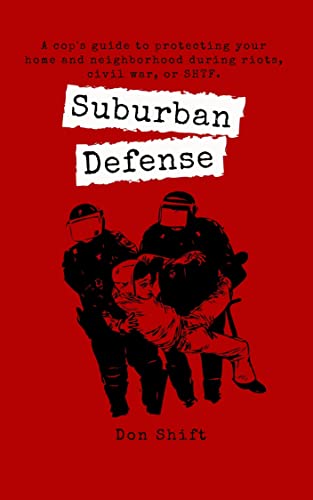
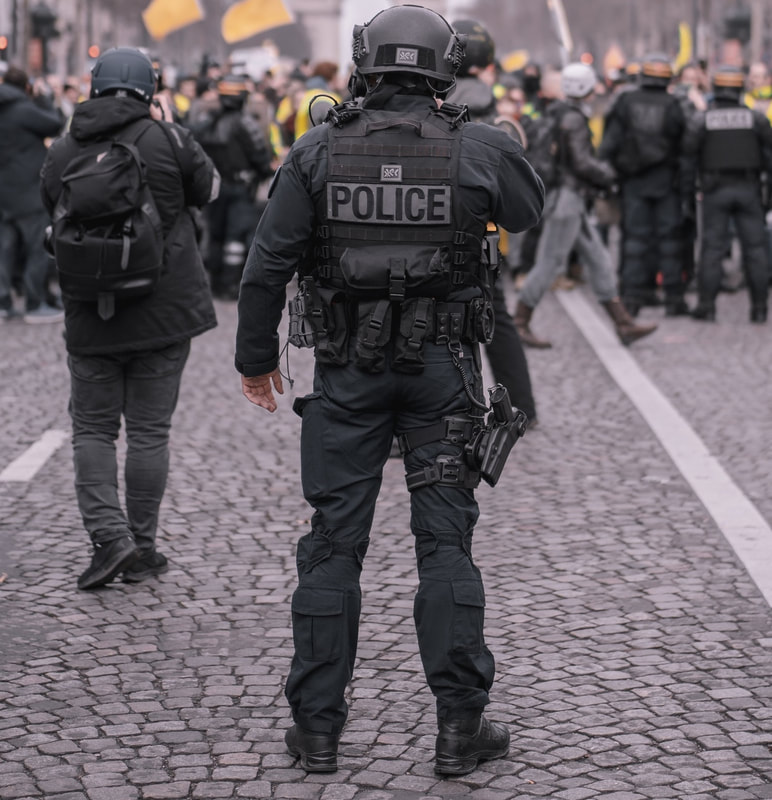
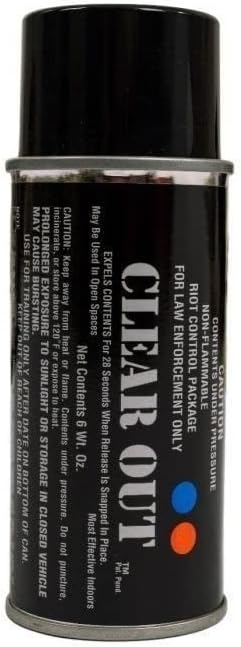
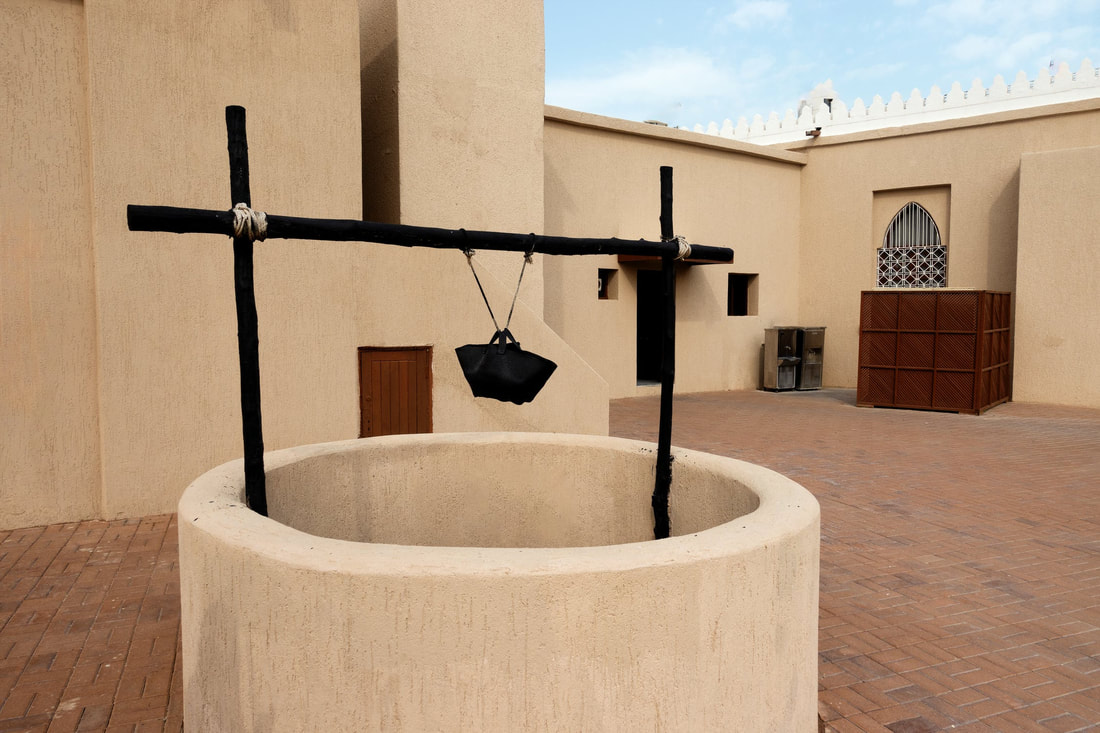
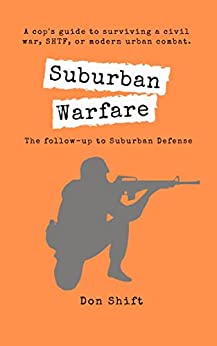
 RSS Feed
RSS Feed
